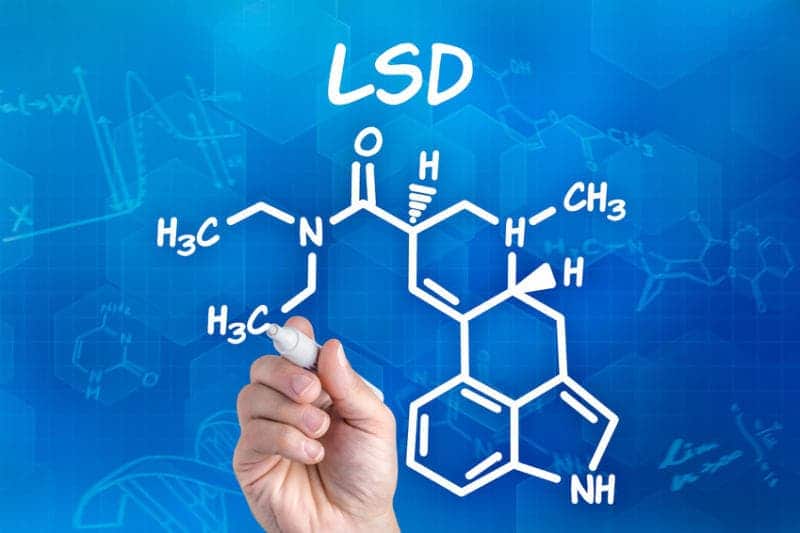After four decades without any published scientific information on LSD, a new study has reopened the door for the psychedelic drug. Psychiatrists in Santa Cruz, California published results from the first controlled medical trial of LSD in over 40 years, highlighting potential medical benefits.
Dangers and benefits

Take A Trip?
Psychedelics like lysergic acid diethylamide (LSD) have a complicated history of being used as potential treatments for mental illness. However, in the past decades, they seemed to have been abandoned by the medical community, only to make a resurgence in the past few years.
Lysergic acid diethylamide (LSD) or acid, as it is colloqually called, is a psychedelic drug well known for its psychological effects, which can include altered thinking processes, closed- and open-eye visuals, synesthesia, an altered sense of time and even spiritual experiences. LSD was first synthesized by Albert Hofmann in 1938. Hofmann was also the first person to ingest it, going on to author over 100 scientific articles and numerous books. Interestingly enough, Hofmann, who was called the greatest living Genius by the Telegraph in 2007, tested the drug regularly on himself, and lived on to be 102. He used to call LSD “medicine for the soul” and was frustrated by the worldwide prohibition of it.
“It was used very successfully for ten years in psychoanalysis,” he said, adding that the drug was misused by the Counterculture of the 1960s, and then criticized unfairly by the political establishment of the day.
Indeed, he agreed that the drug can be misused and can be dangerous if taken without supervision… but then again, so can many other legal drugs. For him and other scientists, it was sad that they weren’t allowed to experiment and test the potential of the drug. A ban on LSD and subsequently a lack of funding and interest for research in the field meant that for 40 years, since the 1970s, not a single clinical study was approved by the U.S. Food and Drug Administration.
But now, Rick Doblin puts the potential benefits of LSD back in the spotlight. He agrees with Hoffman that the drug was misrepresented and misused, and wants to change the general perception regarding the drug.
“LSD was the last of the drugs to re-enter the lab, because it’s the quintessential symbol of the ’60s” Doblin said.
LSD in psychotherapy
Scientists investigated the effects of LSD on 12 terminally ill patients, coping with anxiety regarding their conditions. Out of the 12 patients, 8 were randomly selected to receive drug-free psychotherapy sessions as well as two LSD-assisted sessions 2 to 3 weeks apart. Four participants were given a placebo during therapy and they served as the control. As expected by scientists, LSD helped the patients to develop a deep psychedelic state, reaching what patients described as an “emotionally intensified dream-like state”.
“My LSD experience brought back some lost emotions and ability to trust, lots of psychological insights, and a timeless moment when the universe didn’t seem like a trap, but like a revelation of utter beauty,” said Peter, an Austrian subject who participated in the study.
Scientists then followed the long term effects, measuring anxiety repeatedly for one year. They note significantly reduced anxiety in the patients who underwent LSD therapy, while the control group actually had overall increased anxiety.
While from a scientific point of view it’s clear what happens in the brain when you take LSD, from a mental perspective, things can get a bit more complicated and fuzzy. Doblin said LSD-assisted therapy is a special experience, both cathartic and mystical. He believes it causes a transcendence of time and space that helps patients focus on the present and dealing with their issues.
“Something is fundamentally changed by successful LSD-assisted psychotherapy,” he said. “That’s not to say it works in everybody, but there can be permanent changes in people’s attitudes and in their brains.”
LSD was officially made illegal in the U.S. in 1966 as a result of “increased nonmedical use,” shutting down all research of its potential medical benefits. Now LSD is classified as a Schedule I substance alongside heroin and marijuana, meaning that it is considered to have absolutely no medical potential. However, while you shouldn’t take LSD by yourself (really, don’t), it’s clear that in some cases, with adequate medical supervision, LSD has potential benefits.
The study was done by MAPS, a very interesting non-profit organization that does clinical studies on drugs like LSD, marijuana, and MDMA. Recently, more psychedelic drugs have been suggested as means of therapy. Back in 2011, it was suggested that magic mushrooms can treat depression, anxiety and addiction, and the findings were confirmed in 2012. Just a few months ago, in 2014, a new study showed that magic mushrooms can be used to quit smoking, while ecstasy was used to deal with PTSD where conventional methods failed. All in all, psychedelic drugs seem to open doors which were previously closed in therapy. Hopefully, they can be used successfully.
What do you think? Should we attempt to use psychedelics in medical therapy, or is it simply a taboo – something we should lock and throw away the key?
Scientific Article: Safety and Efficacy of Lysergic Acid Diethylamide-Assisted Psychotherapy for Anxiety Associated With
Life-threatening Diseases.










